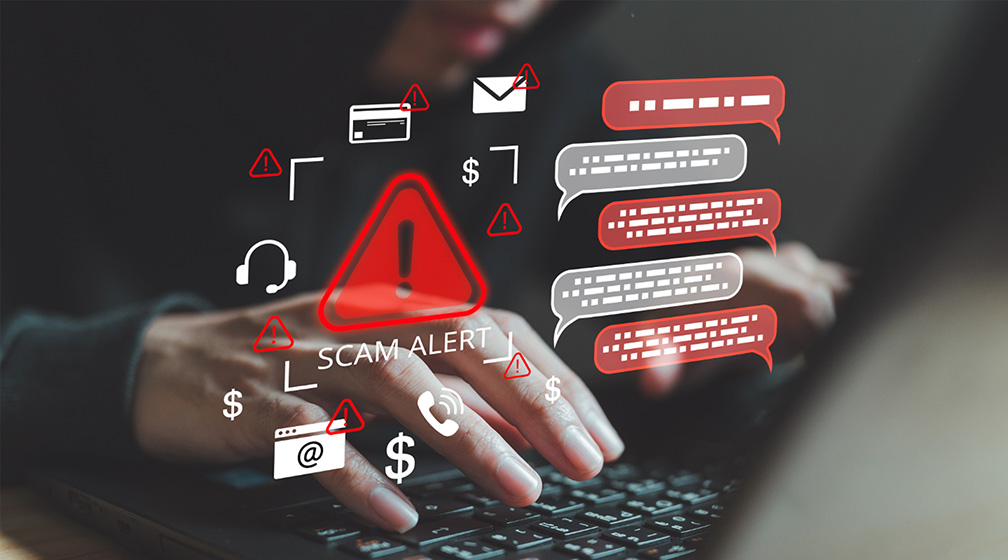
We rely on the internet, from communicating with loved ones on social media to working and conducting business. As a result, vulnerability to cybercrime is a serious concern.
One of the ways hackers attempt to exploit people is by creating Wi-Fi hotspots that imitate a legit business, organization or even an airport and acts as a “guest” public hotspot. This fake network looks like a legitimate wireless connection but are controlled by the hacker.
Fake hotspots are created when a hacker makes an access point that looks like a free Wi-Fi hotspot.
When the victim uses the Wi-Fi hotspot, they can load the websites they usually visit but the hacker is actually spoofing the web traffic. The hacker is following the victim’s keystrokes every step of the way, including taking note of any usernames, passwords and financial information the victim is typing.
A fake hotspot can be dangerous. Connecting to a fake hotspot may unknowingly give criminals access to your personal information, including passwords, bank account information, and other sensitive data.
Criminals can use this information to commit identity theft or fraud. Additionally, fake hotspots may contain malware that can infect your device and allow criminals to gain control of it. However, there are steps you can take to help stay safe.
How To Identify a Fake Wi-Fi Hotspot?
First, check to see if the hotspot’s network name. Is it something generic like “Free Wi-Fi” or “Coffee Shop Wi-Fi”? While some businesses use these types of names for their networks, it’s also a tell-tale sign of a fake hotspot.
Next, try to connect to the network and see if you’re prompted for a password. If you are, that’s a good sign since most fake hotspots don’t require a password.
If you can connect to the network without a password, open your web browser and see if you can browse the internet. If you can’t, that can indicate that the hotspot is fake.
You can also look around for a sign that states the business or organization’s official guest hotspot name and password. Finally, look around and see if other people are using the hotspot. If there aren’t, that can be another sign that the hotspot is fake.
What To Do If You Connect to a Fake Hotspot?
If you've ever been in a public place and tried to access the internet, you may have come across a fake hotspot. If you feel you’ve connected to a fake hotspot, you should first disconnect from the network. Once you are disconnected, avoid connecting to any other unknown networks.
Once you’ve connected to a secure network, change your passwords.
If you have given any personal information while connected to the fake hotspot, such as your credit card number or email address, be sure to contact your bank or service provider to cancel and be on the lookout for any fraudulent charges or accounts that may have been created. Report the fake hotspot to the authorities so they can investigate and take appropriate action. Finally, install security software on your device to protect yourself from future attacks.
How To Protect Yourself from a Fake Wi-Fi Hotspot?
Here’s what you need to do to help protect yourself from a fake hotspot:
Check the Network’s Name
The first thing you should do when connecting to a hotspot is to check the name of the network. If it looks like something generic like "Free Wi-Fi" or "Coffee Shop Wi-Fi," be suspicious. A legitimate business will usually name its network after its business.
Verify the Login Page
When you connect to a hotspot, your browser should automatically redirect you to a login page. If it doesn't, that's a red flag. Also, check for misspellings on the login page – another sign that it might not be legitimate.
Avoid Using Public Wi-Fi for Sensitive Activities
If you must use public Wi-Fi, be aware it’s not secure or a private network. Avoid doing sensitive activities like online banking or shopping while connected to a public Wi-Fi hotspot.
Use a VPN
A VPN encrypts your traffic with military-grade encryption. This can make it impossible for someone to snoop on what you’re doing. Even if they can intercept your traffic, they only see gibberish. A VPN also hides your IP address. This makes it harder for someone to track you online.
Keep Your Software Up to Date
Making sure your operating system and your software are up to date is important for security. But it's crucial when using public Wi-Fi since new exploits are constantly being discovered.
Use a Firewall
A firewall can help protect your computer from attacks by blocking incoming connections that are not authorized. Many routers come with a basic firewall built in, but you can also install software firewalls on your computers.
Be Careful What You Click
When connected to a public Wi-Fi network, be extra careful about what you click. Since these networks are not secure, it's easy for attackers to create fake websites that look legitimate ones but are designed to steal your information.
Avoid Using File-Sharing Programs
If you must use file-sharing programs, only do so over a VPN. Otherwise, you risk having your traffic snooped on or your IP address exposed.
Change Your Passwords
If you’ve used a fake hotspot to access sensitive information, it’s important to change your passwords as soon as possible. A hacker can use the information they’ve gathered to access your accounts and steal your information.
Change Your DNS Settings
One way to protect your device from a fake hotspot is to change your DNS settings. You can do this by entering your network settings and changing the DNS server to one that is more trustworthy. This can help make sure you are not redirected to a fake website when you connect to the hotspot.
Be Vigilant
In general, it’s important to be vigilant when using public Wi-Fi. Avoid accessing sensitive information or logging into accounts when connected to a public network. If you must access sensitive information, be sure to use a VPN.
Use a Reputable Antivirus Program
Antivirus software can provide some protection, so it's a good idea to have it installed and updated. This is especially important if you're using a public computer to access the internet.
Be Aware of The Risks
Using public Wi-Fi connections comes with some risks. But if you take steps to help protect yourself and not share personal data or account information while using public Wi-Fi, you can minimize the dangers.
The Bottom Line on Hackers and Fake Hotspots
While hackers can create fake hotspots, there are ways to help protect yourself from such attacks. It is beneficial to use a VPN whenever connecting to public networks. Also, it is essential to verify the security before logging in.
Remember that not all hotspots are created equal; if you’re unsure about the safety of a particular network, don’t connect. However, with the right identity theft protection plan, you can help protect your identity and have VPN. IdentityIQ plans feature antivirus and VPN, with other plans available to add antivirus and VPN as an add-on for complete protection.







